Items five and six of the checklist concern delicate matters: the choice of the readings at the ceremony and whether a leaflet should be provided to follow the religious rite.
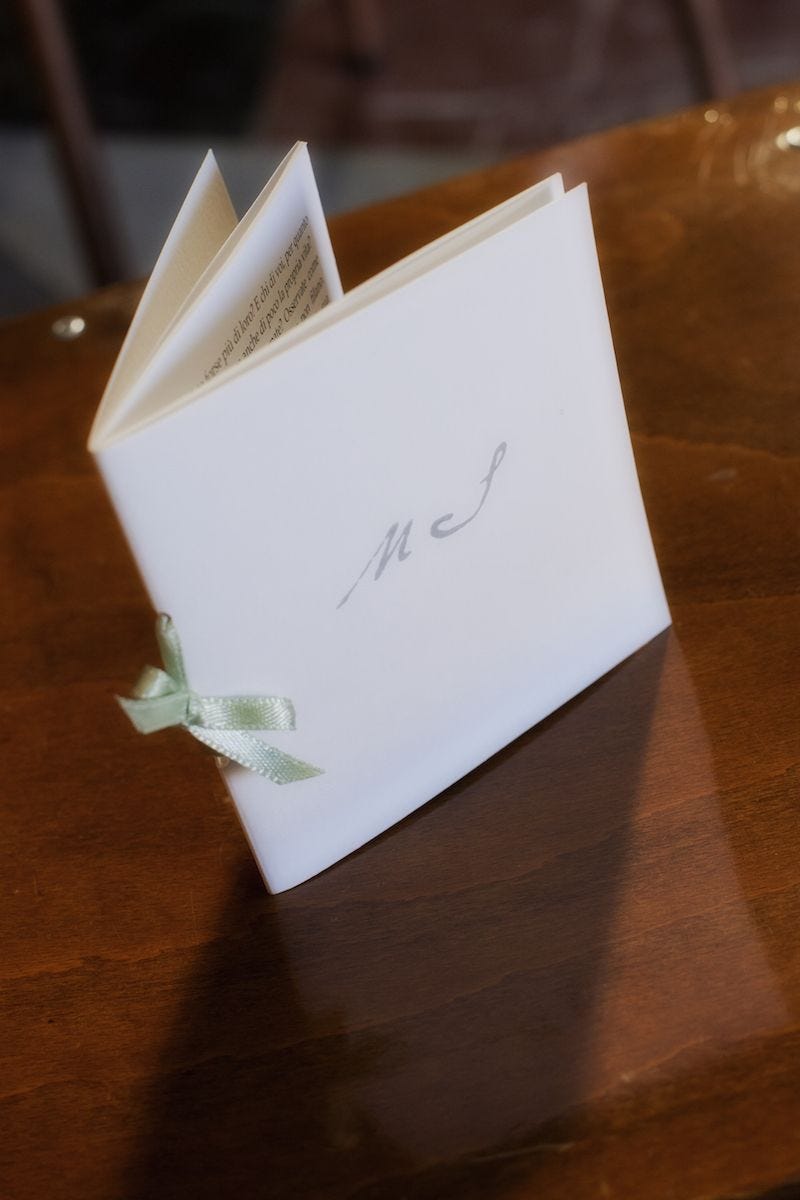
Starting with the latter (that’s actually item six of the checklist), I’d strongly recommend putting together a ceremony leaflet, regardless of the type of religious rite. I recommend this choice as the guests will feel more involved, they will be able to follow the ceremony through its various phases, and will get less distracted: this last aspect should not be underestimated, as it often happens that religious ceremonies take place in small venues (small chapels, for instance) where only some of the guests can fit, so they will inevitably scatter outside, usually right in front, and it gets complicated for them to follow the rite. With the leaflet, as well as an appropriate audio system, even those standing far away could follow the religious ceremony.

I should point out that when I say “an appropriate audio system” I don’t mean huge speakers linked to inside microphones where sounds and words come out at deafening high volume or witnessing while the newlyweds are being “microphoned”: we’re not in a talk show! Coming up with an appropriate system means that whoever cannot physically be into the ceremony venue (e.g., the chapel) will be able to follow its different parts with the help of a “delicate” sound system. Granted, microphones and speakers will be necessary, but a good audio technician should be there to make sure that this whole process remains somewhat discreet.
Also, no mega screens (not even small ones), or other similar equipment, right outside of the ceremony venue, please.
The leaflet, well crafted, will also be a nice memento for the newlyweds and remind them of the many choices they had to make at different times of their ceremony.
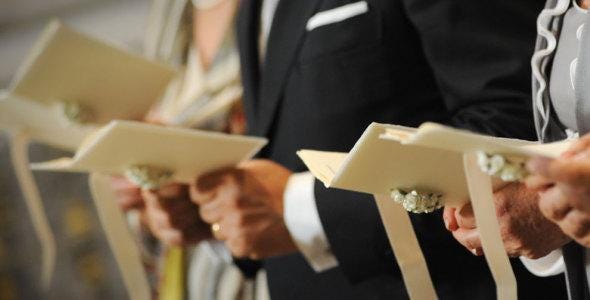
As for the first one of the two items mentioned at the beginning (item five), the choice of the readings is something to be done with much awareness: beautiful, well-crafted leaflets are often seen (with a beautiful paper and gorgeous decorations), but then their content is nothing but some formulae copied from the one seen at the last wedding the newlyweds went to. It happened to me to hear, at times, some not-too-subtle declarations from couples close to getting married about tucking away a wedding leaflet because “it will come useful when we’ll have to do ours”. This doesn’t seem like a sensible behavior to me, as it shows a lack of respect for the newlyweds who first put together the leaflet that will be copied by others.
Even when you don’t happen to hear declarations such as the one above, you can tell right away when a leaflet has been copied from another one as, guess what, the readings are pretty much always the same: broadly speaking, the readings you hear at weddings belong to a short list of three or four. To stand out and do something that really reflect the couple’s feelings, I would recommend getting guidance from the officiant of the ceremony in the choice of passages: religious ceremonies are mostly made of ritual formulae that cannot be changed, but then there are the readings taken from the sacred texts that can be freely chosen, or at least be the subject of some thoughtful guidance.
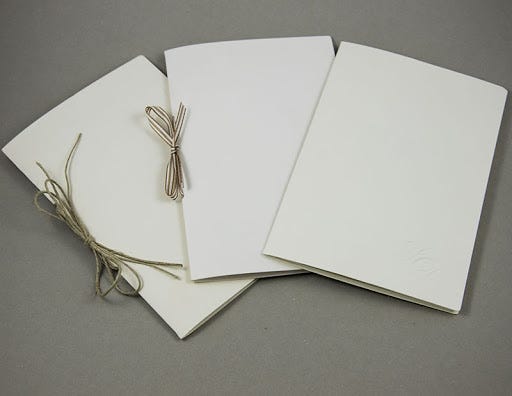
The officiant will know what to recommend, and then the newlyweds will make their own choice. But I seriously recommend some good teamwork in this respect.
Once all the phases of the religious ceremony have been chosen, when crafting the leaflet I’d recommend the same paper used for the announcements and the invitations, so as to have a common thread. The final touch would be to add a little ribbon of the same color as the “wedding color”.
As you can see, some details come around time and again in many organizational phases of a perfect ceremony; therefore, pay attention to all aspects, even those that might apparently seem less important.
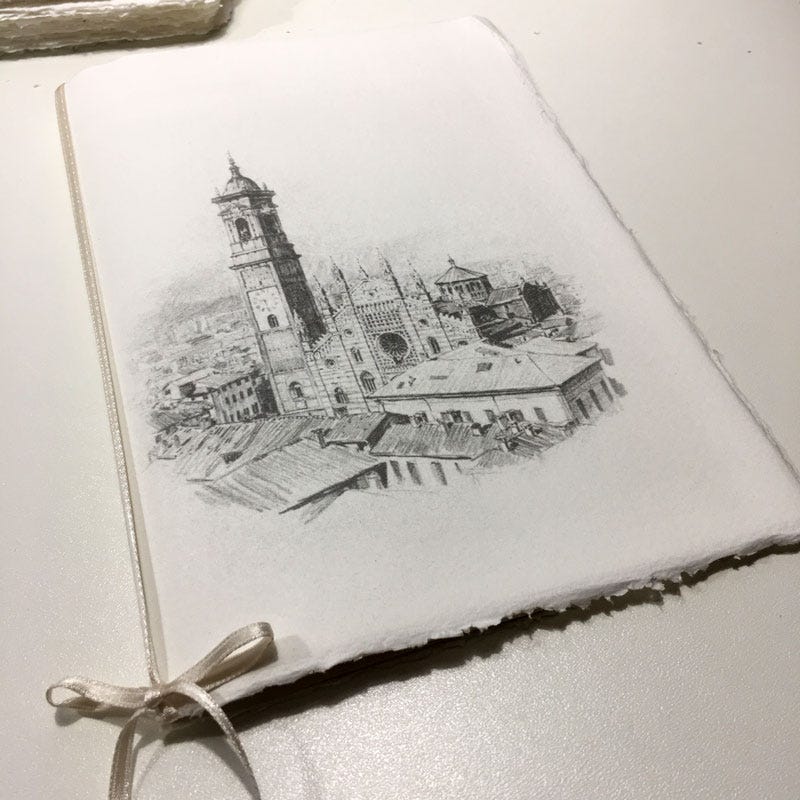
When the leaflet is ready and back from the printing press into the hands of the newlyweds (usually just a few days before the fateful date), the bride shall choose, within the circle of her more intimate friends, a couple of people who will do the ceremony readings.
I suggest to make this choice just a few days prior to the wedding, and not on the very day, so as not to embarrass anyone as well as allow the chosen ones to get prepared: the bride, indeed, should forward a draft of the leaflet with the assigned reading to the person who will have accepted to read so that she could get adequately prepared for the ceremony.
Emotion, sometimes, plays tricks. So, getting prepared for the reading in advance with a couple of rehearsals at home allows to be more confident over all the passages and maybe dispel any doubts that might arise on the exact pronunciation of a given word or on any (strange) accents, if any.
An important recommendation concerns the speed with which the reading is done: reading fast doesn’t mean that you’re a good reader, it only means that you’re too excited or nervous. The piece should be read, acted, with calm and solemnity, without having people fall asleep though!
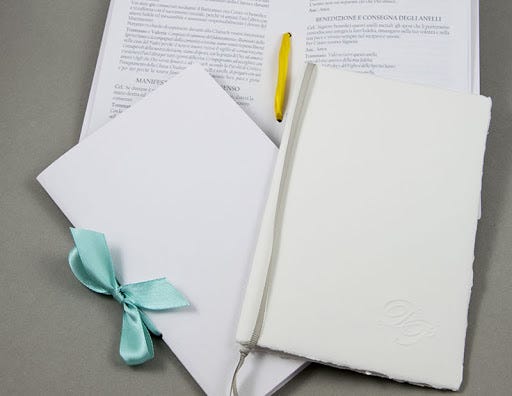
Some prior rehearsal, with the readers arriving a little earlier to get to know each other (in case they don’t, already), as well as a word with the musicians to be super sure about when to start reading without overlaps (yes, something like this has happened as well) are rules that should always be followed.
Should there be – as written in last Sunday’s issue – a director, i.e. a person dedicated to coordinating the musicians, then the readers will be coordinated as well, and no problems will arise.
It all sounds so obvious, but I can assure you that it’s not the case and these posts will help you out in not overlook anything.
Until next Sunday.



